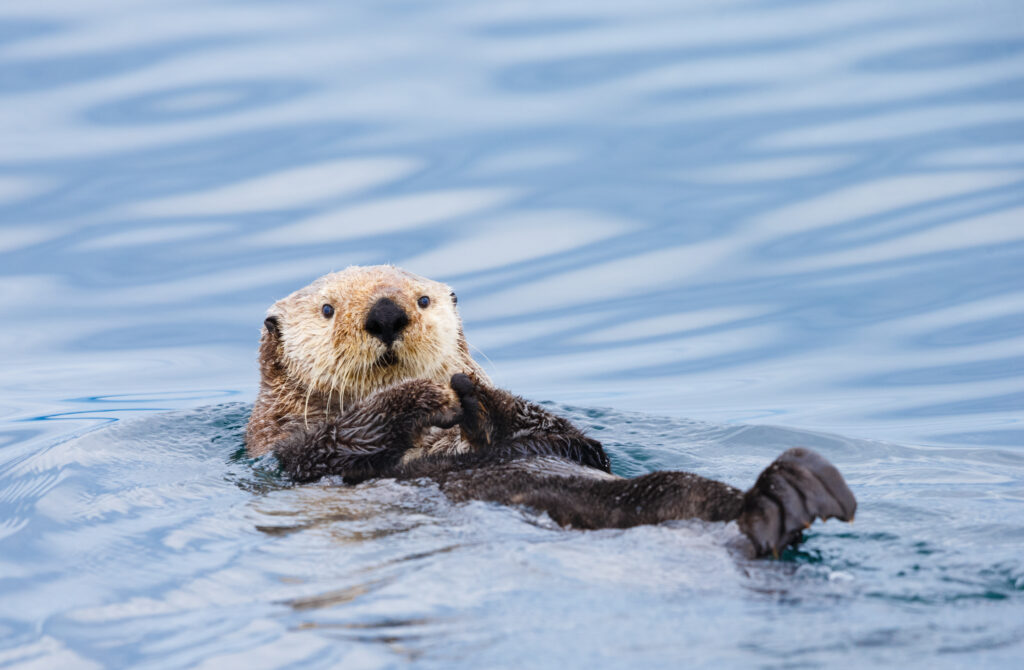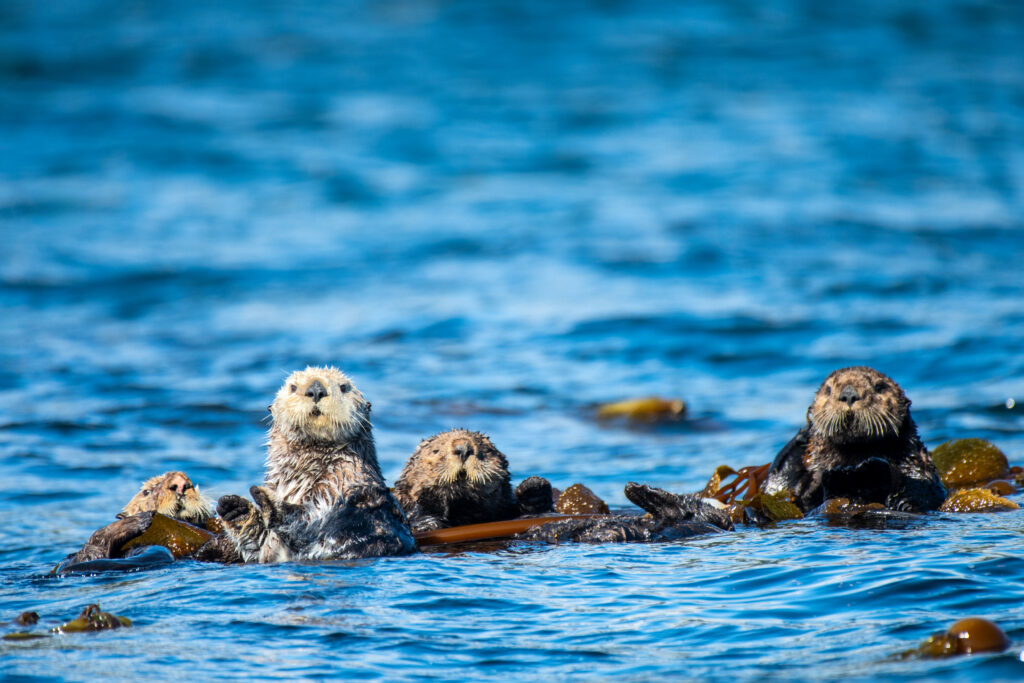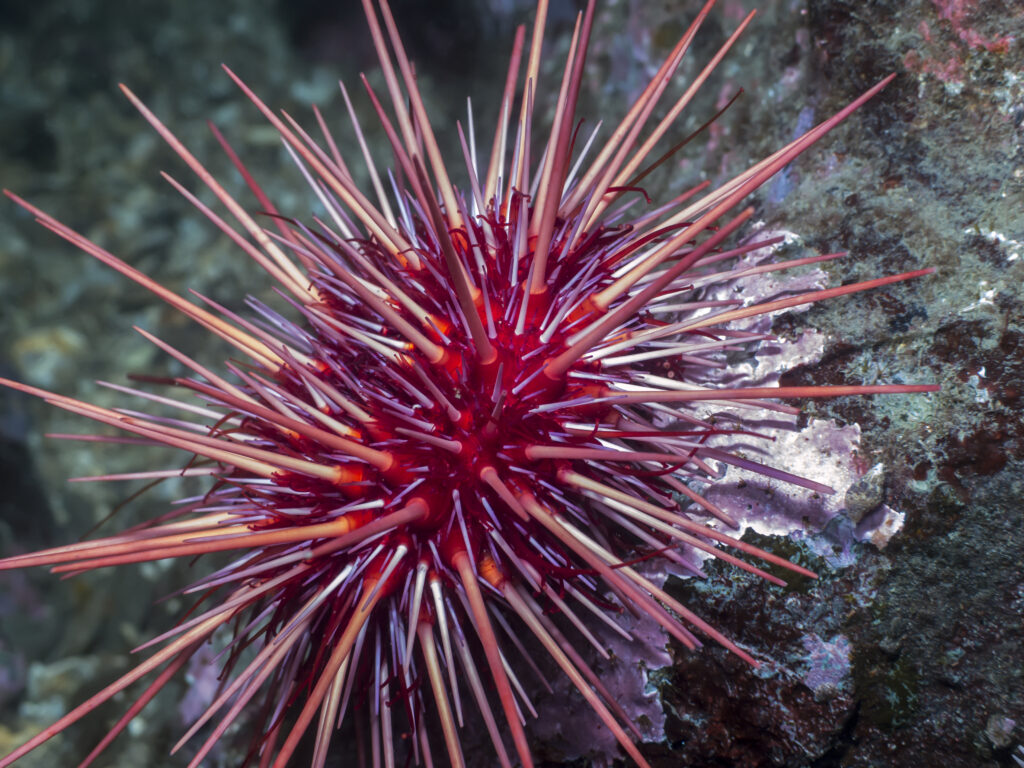
Before the fur trade started, Indigenous people along the coast coexisted with sea otters for thousands of years — eating the same shellfish such as clams and crabs.
The Haida Nation know sea otters as ḵu•ḵuu, which have been a crucial part of ecosystems in their territory as well as along the entire coast.
In the Haida language, there’s a concept is known as Ginn ‘wáadluwaan gud .ahl kwáagíidang•Gina ‘waadlux̱an gud ad kwaagid — meaning everything depends on everything else.
But in the late 1700s until the early 1800s, Americans and Europeans saw the value of the luxurious sea otter pelts and initiated mass hunts for the marine predators.
Dozens of ships began arriving in the Pacific Northwest and stockpiling thousands of sea otter pelts — taking the furs across the ocean to other countries to trade.
As a result of this boon, sea otters were decimated along the coast within just a few decades. And their demise also resulted in big changes to the ocean.
“Ḵu•ḵuu are one of the very few predators of large red sea urchins, a prickly kelp eater. Without ḵu•ḵuu to eat them, sea urchin numbers exploded,” according to the Haida Nation.
The urchins feed on undersea kelp forests so, in turn, these forests were wiped out in many areas along with seaweed and other important organisms, creating what’s called “urchin barrens.”
“Red urchins can survive for a long time in a dormant state when there is no more food, and this allowed urchin barrens to persist and prevent kelp forest regrowth.”
Kelp forests are important homes for many species such as rockfish and herring. The forests also protect shorelines Kelp forestsKelp forests protect shorelines by reducing erosion and preventing soil loss. Acting as marine havens, kelp fosters biodiversity, and its carbon sequestration mitigates ocean acidification. Furthermore, kelp filters water, enhancing coastal clarity and resilience. and remove carbon from the atmosphere, helping to make the ocean healthier.


“We know that without the sea otter, kelp forests would be overtaken by sea urchins,” said Heiltsuk Hereditary Chief Harvey Humchitt Sr. in a video for the Coastal Voices project.
“We have to learn how to maintain that balance.”
Now, sea otter populations have been increasing along the coast — thanks in part to marine conservation efforts to reintroduce the species.
After the otters were hunted to near-extinction, biologists began capturing sea otters from Alaska and moving them to BC in the late 1960s and early 1970s. The otters started to multiply and are now thriving along the coast.
But this has also in turn made foods like crabs, clams and sea urchin less available for humans to eat.
As the otters make a comeback, humans and otters must learn to live together once again, which means taking lessons from the past, explained Hup in Yook (Tom Happynook), a Huu-ay-aht hereditary whaling chief.
“Traditionally we had people who were responsible for taking care of the resources, and when the sea otter was abundant in our territory, this family would be charged with protecting our clam beaches, our crab harvesting areas,” he said.
In Haida Gwaii, the nation is preparing for changes to the ecosystem — with the return of otters making kelp forests larger and healthier while decreasing populations of urchins and other shellfish.
Is it possible to give one example of the above? How is the nation making kelp forests healthier?
“Learning from other places where ḵu•ḵuu has returned, we expect the ḵu•ḵuu population to grow slowly over the next few decades,” according to the nation.
“In other parts of the coast where other First Nations and ḵu•ḵuu lived together, clam gardens were an important management tool that allowed both to co-exist and each to get enough seafood for their needs. This and many other management strategies were used in the past to ensure that people and ḵu•ḵuu could both get enough food to eat while keeping a healthy and balanced ecosystem.”
Curious for more science of Indigenous Knowledge Systems?
Explore the solutions for regenerating our planet at Change Reaction.
